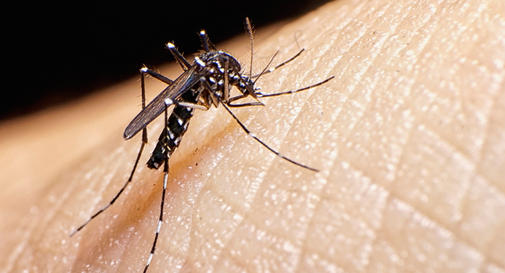The U.S. Center for Disease Control (CDC) is emphasizing that pregnant women should not travel to any areas where there’s a risk of Zika. Right now, Zika has been reported in most countries in Latin America, the Caribbean and Southeast Asia as well as several counties in southern Florida and southern Texas. As you consider your travel plans for this summer, be aware of the latest Zika Virus information.
Zika Virus Background
Zika Virus is a flavivirus (RNA-based virus), which is the same class of virus that causes Hepatitis C and yellow fever. The major reservoirs for this virus are humans and primates, and the means of transmission in nature is through bites from infected Aedes mosquitos – insects that also transmit dengue virus. These mosquitos are found throughout the southern, eastern, and central regions of the United States. Other means of transmission include blood transfusions, organ transplants, sexual intercourse, and vertical transmission (mother to fetus).
Current outbreaks are most prevalent in South and Central America as well as the Caribbean, but the virus has also made its way to Florida. A new case was recently discovered in Texas. According to the CDC, 1,600 Zika cases in pregnant women have been reported and health officials are seeing about 30 to 40 Zika cases in pregnant women each week in the U.S. These cases were most due to women who caught the virus in 14 countries or territories across Latin America and the Caribbean.
Symptoms and Effects
Zika is deceptive because 80% of people infected with the virus don’t show symptoms. Those that do show symptoms often display a mild rash, low-grade fever, slight headache, and characteristic conjunctivitis. The biggest concern is the potential for birth defects in fetuses who obtain the virus from an infected mother. Infected mothers often give birth to fetuses with microcephaly, Guillain-Barre syndrome, or other major neurological abnormalities that can affect the infant even after birth.
Treating and Controlling Zika
There is no vaccine or specific treatment for Zika. Instead, the focus is on relieving symptoms, which usually last between 2 and 7 days.
Many organizations are working hard to develop a Zika vaccine as soon as possible. Scientists will soon conduct clinical trials in South America, where populations are more likely to be exposed to Zika. Given the short timeline and necessary urgency, this focus on developing a Zika vaccine is an excellent feat, as vaccines usually take a decade to develop. The new Zika Virus vaccine will potentially be available by 2018.
Efforts to control the spread of Zika globally resemble other means of avoiding mosquito-borne infectious diseases (like Malaria) including: avoiding travel to hyperendemic countries; mosquito eradication in infected areas; general protection against mosquito bites; regular screening of pregnant women as well as blood as organ donors in affected areas; and finally, delaying pregnancy until the disease is controlled. Ultimately, a vaccine is the most plausible solution for widespread protection from Zika.
W.H.O. Status
Zika is classified as an emerging infectious disease (EID). The World Health Organization (W.H.O.) has declared an end to the global emergency over the spread of Zika virus. It is now proven to be a dangerous mosquito-borne disease (similar to malaria) and will be viewed as an ongoing threat. The W.H.O. response is not meant to downgrade the significance of the disease, but rather inform the public that the Zika virus is here to stay and should be treated with such importance and diligence.
Additional Resources:
Centers for Disease Control (CDC) Alert
NPR’s ongoing Zika Virus coverage
by Susan Puckett, PA-C
in the Internal Medicine Department
at Boulder Medical Center

